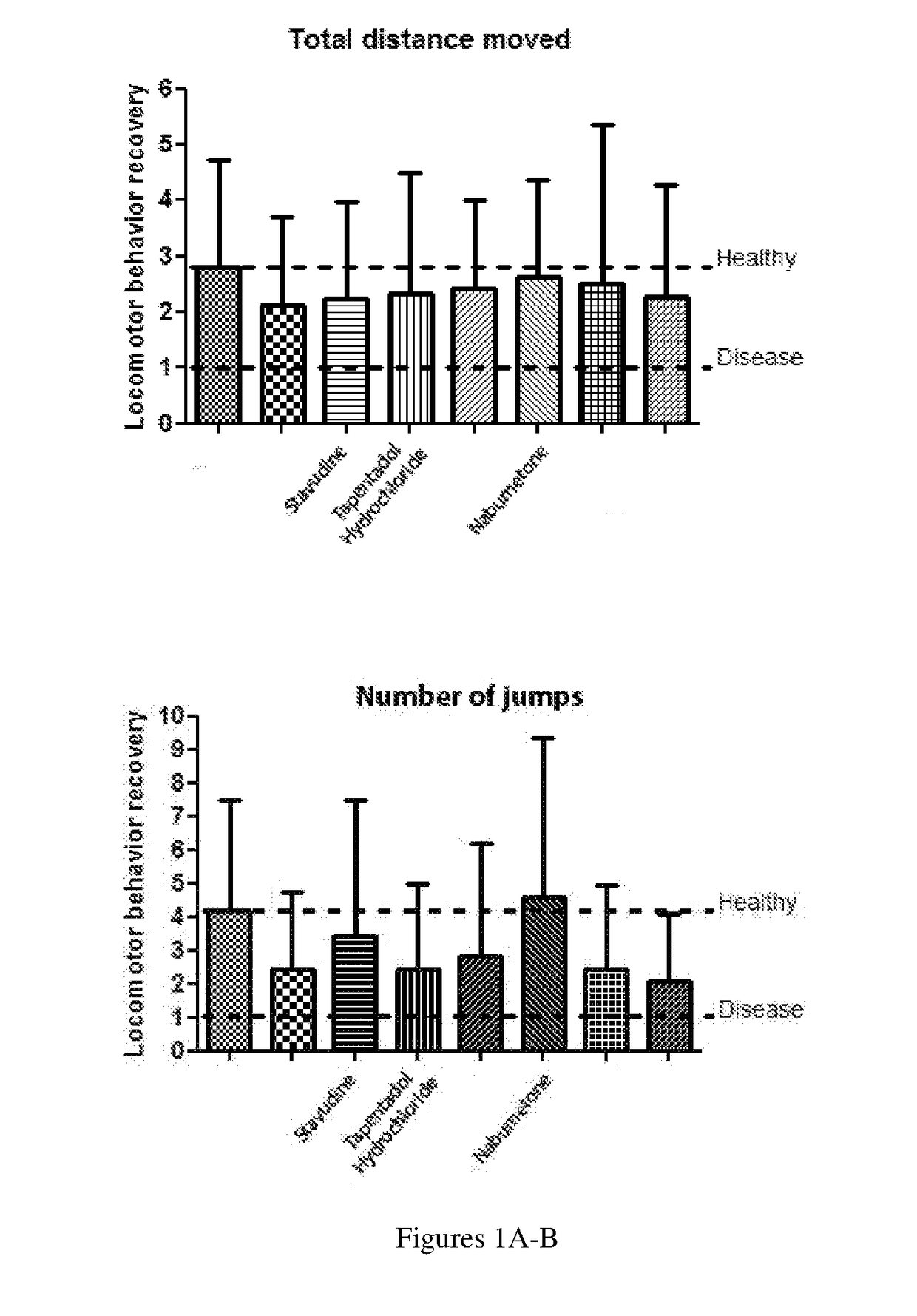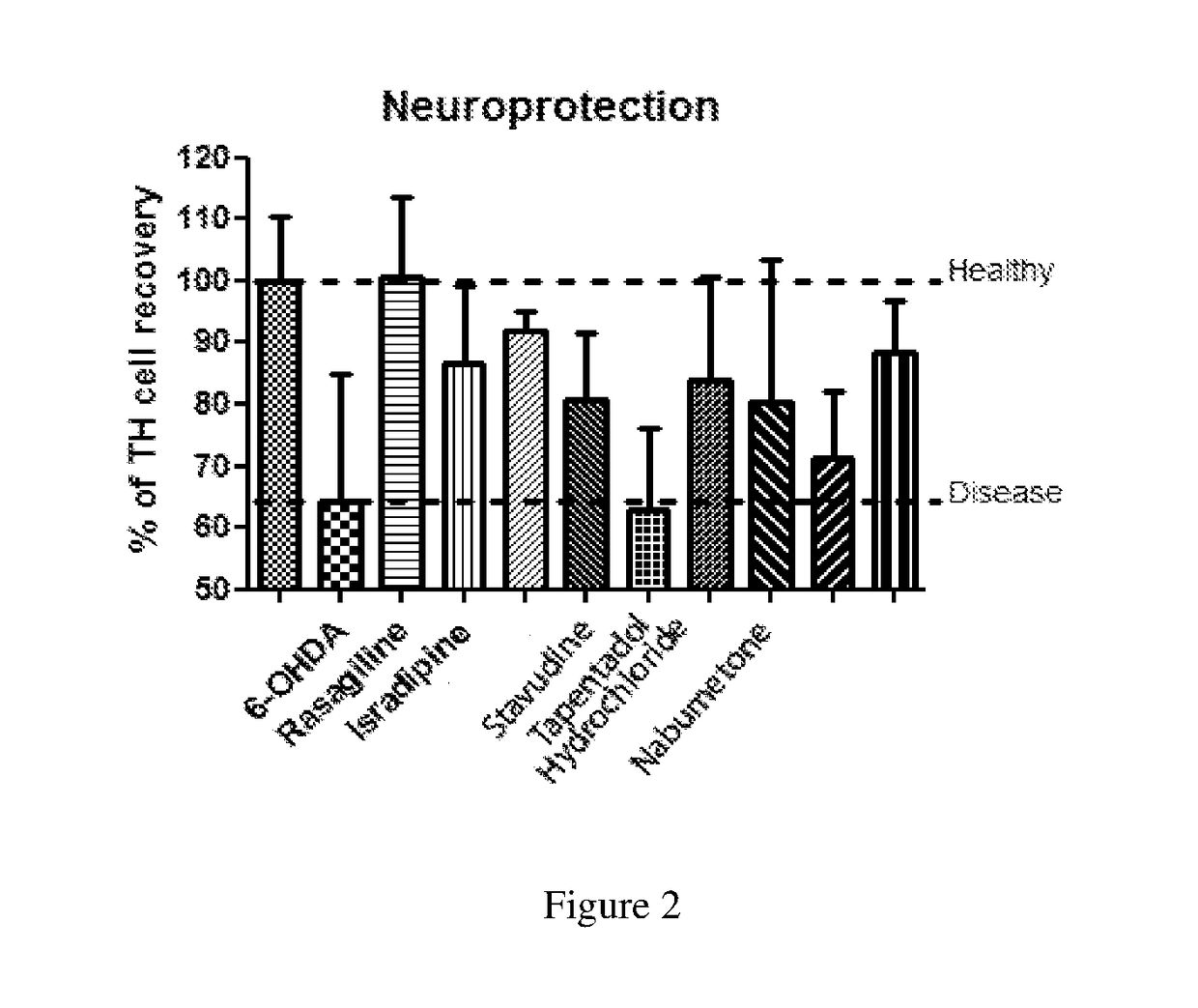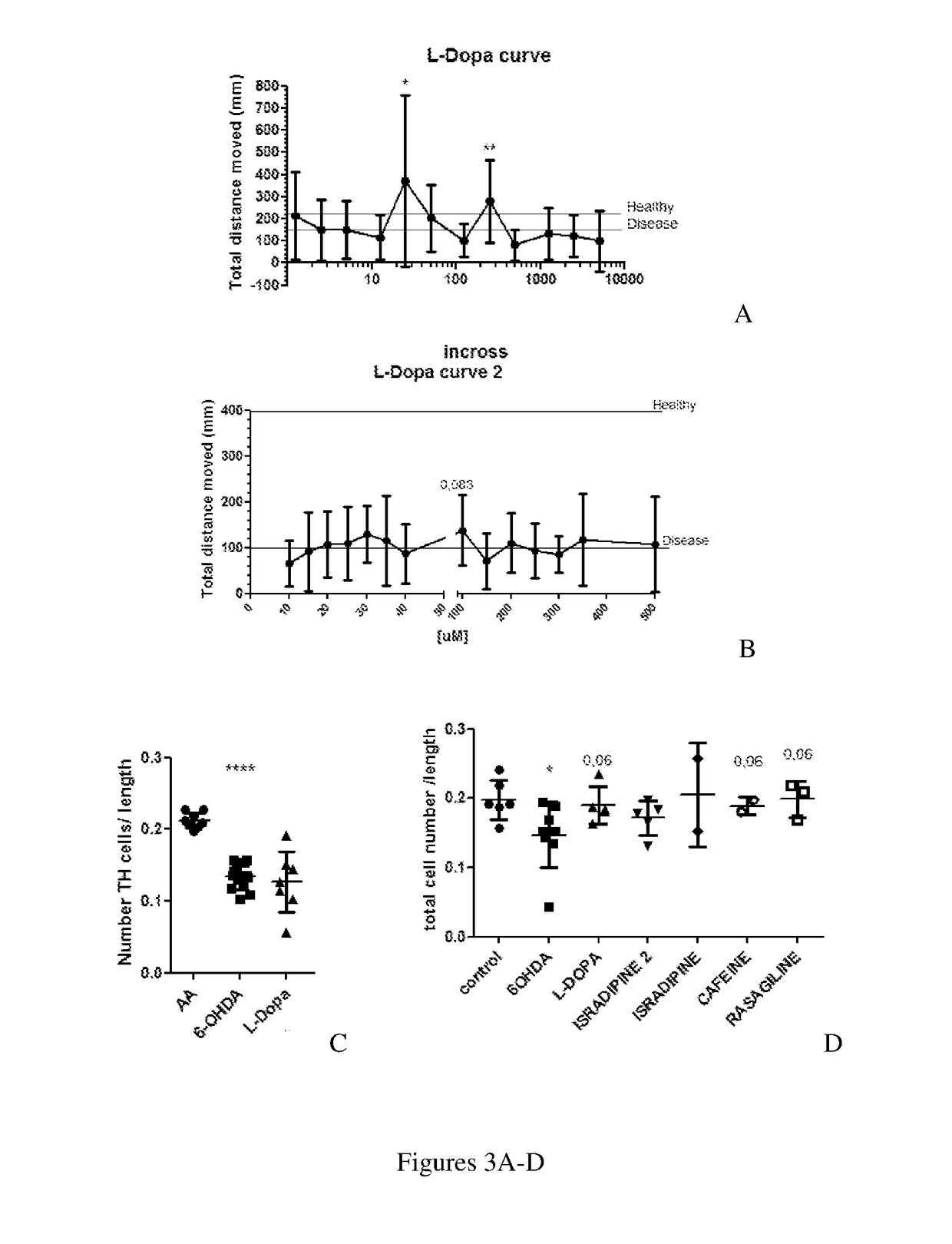Compositions for Use in Treating Parkinson's Disease and Related Disorders
a parkinson's disease and related disorder technology, applied in the field of compound formulations for treating parkinson's disease and related disorders, can solve the problems of increasing the non-responsive period to this therapeutic approach, no pharmacotherapy currently exists that shows a relevant delay, and increasing the number of non-responsive periods. , to achieve the effect of increasing the ‘off period— frequency, increasing side effects, and reducing efficacy
- Summary
- Abstract
- Description
- Claims
- Application Information
AI Technical Summary
Benefits of technology
Problems solved by technology
Method used
Image
Examples
example 1
Identification of Compounds that Protect Against PD-Phenotypes
[0224]Compounds that rescue the parkinsonian phenotype were screened for, from within a small molecules library. As the screening step was blinded, the compounds initially were named with a code number. Details of the molecules are provided in Table 1, below.
TABLE 1NameCAS NumberChemical structureDrugbank codeSTAVUDINE3056-17-5DB00649TAPENTALDOL HYDROCHLORIDE175591-23-8DB06204NABUMETONE42924-53-8DB00461
[0225]Zebrafish is a vertebrate model system that has been widely used in drug discovery in advance of mammalian pre-clinical studies. It allows in vivo phenotypic screening and has the potential to identify novel therapeutic targets since phenotype recovery will reflect the integrated physiology of the entire organism. Briefly, the screen involves the following three noteworthy features:
[0226]1) In vivo testing—the screen has several advantages over traditional in vitro cell culture screens, since it integrates all the eff...
example 2
Dose-Response Studies of Candidate and Controls
[0233]For each hit compound, a dose-response curve across a range of concentrations was performed to find the minimal and maximal effective concentrations and also the LD50 in this disease context, again using the zebrafish PD model (6-OHDA).
[0234]Instead of the typical dose-response curve with one peak concentration—effect increasing with concentration—for most of the cases, a dose-response curve with two concentration peaks was observed—one peak at a low concentration and other at approximately 10 times higher concentration.
[0235]For the 7 molecules, a long range curve was performed along a concentration range that comprises large intervals, whereas the small range was performed with concentrations around the lowest concentration peak detected in the long range curve. The results of interest for tested molecules are summarized in Table 2.
TABLE 2LD50Optimal doseNeurorescueL-Dopa>5mM250 |MnoIsradipine0.42 |M0.045 |MconfirmedRasagiline18...
example 3
Identification of Compounds that Correct Freezing of Gait
[0266]In the zebrafish model, the locomotor impairment was measured and related with bradykinesia in patients. Tests included evaluating ‘freezing— in response to a light / dark stimulus. 6-OHDA induced larvae had fewer freezing episodes but spent longer periods in the frozen state. In previous studies, the duration of freezing episodes has been analyzed in PD patients. The 7 selected molecules were tested using their respective optimal concentrations, and positive results were obtained with tapentadol and stavudine. Methylphenidate also was found to exhibit more consistent freezing recovery. Nonetheless, it is an inhibitor of the neuronal dopamine transporter and since 6-OHDA needs DAT to enter the neuron and induce the disease, methylphenidate may be a false positive. Results are shown in FIGS. 9A-9D.
[0267]As FIG. 9A shows, none of the control molecules tested can revert the freezing phenotype.
[0268]As FIGS. 9B-9C show, freezi...
PUM
| Property | Measurement | Unit |
|---|---|---|
| pressure | aaaaa | aaaaa |
| pressure | aaaaa | aaaaa |
| time | aaaaa | aaaaa |
Abstract
Description
Claims
Application Information
 Login to View More
Login to View More - R&D
- Intellectual Property
- Life Sciences
- Materials
- Tech Scout
- Unparalleled Data Quality
- Higher Quality Content
- 60% Fewer Hallucinations
Browse by: Latest US Patents, China's latest patents, Technical Efficacy Thesaurus, Application Domain, Technology Topic, Popular Technical Reports.
© 2025 PatSnap. All rights reserved.Legal|Privacy policy|Modern Slavery Act Transparency Statement|Sitemap|About US| Contact US: help@patsnap.com



